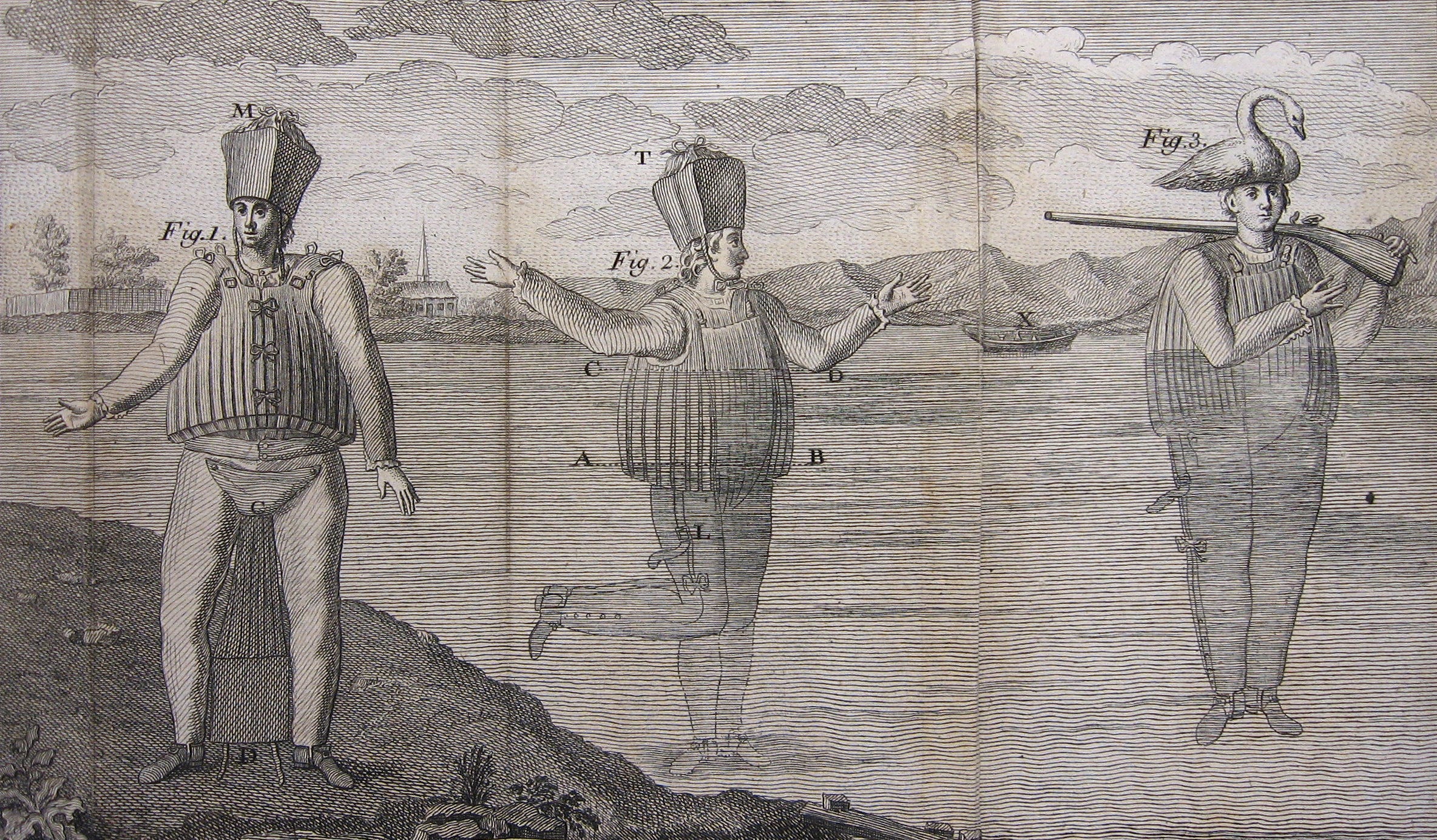
Jean-Baptiste de La Chapelle (1710-1792) thought swimming was unnatural.
La Chapelle, a famous mathematician, thought it was strange for a creature that walked upright to swim horizontally — especially because of how hard it is to breathe when your face is smashed into the water. So, La Chapelle invented a solution to this swimming conundrum: The Man-Boat.
The device was — in La Chapellle’s words — “a corset, by means of which men and women may, while fully clothed, … swim without ever having learned to, while remaining completely upright, floating immersed only up to the level of the chest.” This “corset” was more of a bodysuit, combining waterproof trousers with a linen tunic lined in cork. In essence, the user was basically held afloat by buoyant wood paneling. And, to top it all off (quite literally, in fact), La Chapelle designed a hat in which writing materials and other items could be kept dry.
La Chapelle built a prototype of his Man-Boat and demonstrated it to the Academic Royale des Sciences in 1765 by entering the Seine and performing a series of tasks including eating, drinking, writing, taking snuff, and firing a pistol. He envisioned the Man-Boat both as a pleasure technology (a leisurely afternoon of writing on the water!) and as a wartime technology (for amphibious invasions into enemy territory!).
The demonstration went well enough to get the attention of the king. In 1768, again in the Seine, he tried to demonstrate the Man-Boat for the French king. However, the fact that the device was propelled by treading water became painfully obvious when a strong current pulled La Chapelle away so swiftly that the king was unable to see what was going on.
Still not discouraged by this failed demonstration, in 1775, La Chapelle wrote a 328 page manuscript detailing the device, its construction, and its use. But nobody seemed to have paid any attention to this publication, or perhaps the idea was just seen as too absurd, because the Man-Boat never went anywhere. La Chapelle never demonstrated another prototype. The innovation was lost to the annals of history.
Or maybe it wasn’t. Maybe it was La Chapelle’s manuscript that inspired Tony Stark to build his Iron Man suit. After all, they’re both technological exoskeletons that double as storage space for personal items. And they’re both just trying to make their users’ lives a little easier, one absurd suit design at a time.
Notes.
This post is inspired by and adapted from an article in Extinct: A Compendium of Obselete Objects.




